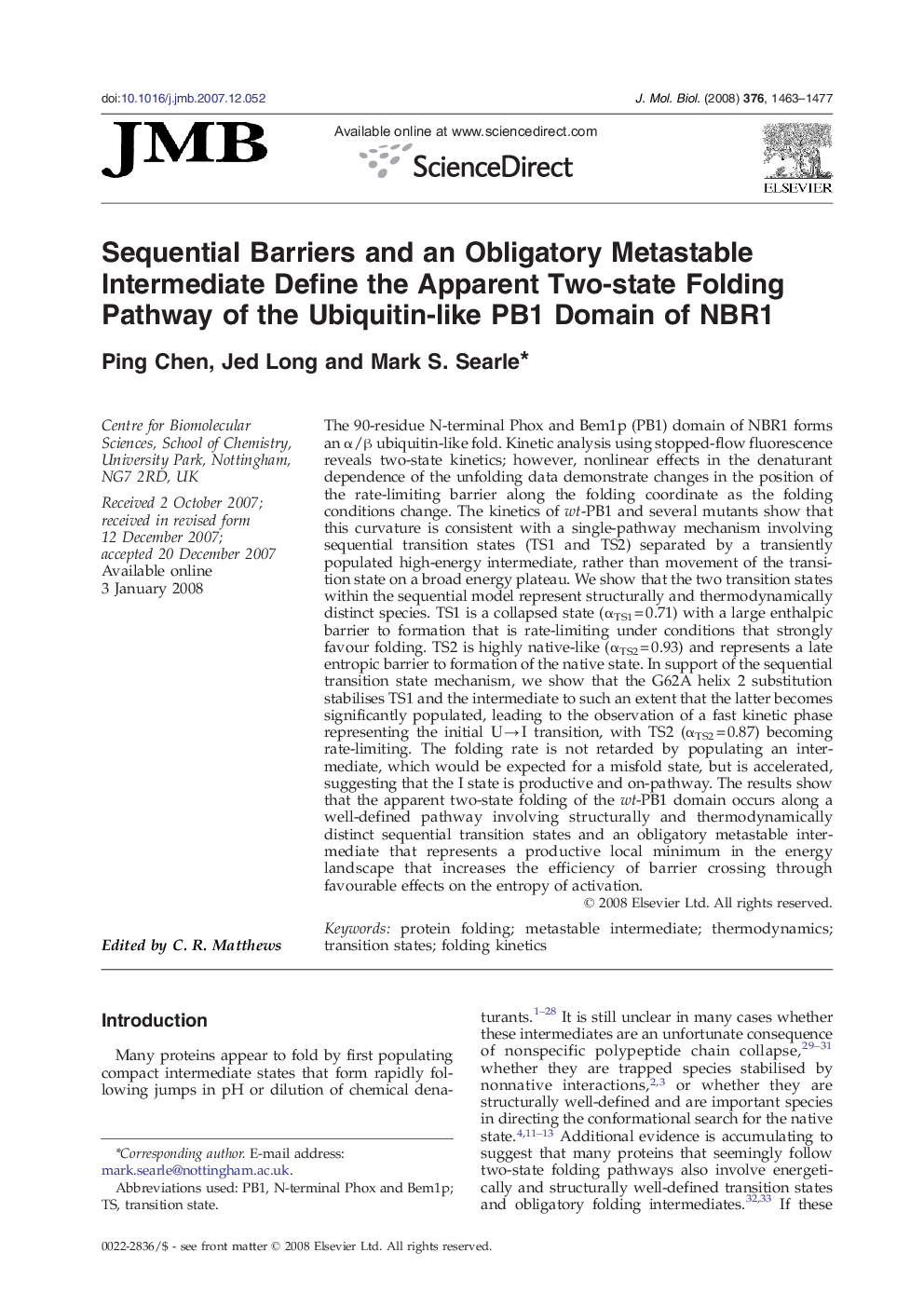| Article ID | Journal | Published Year | Pages | File Type |
|---|---|---|---|---|
| 2187730 | Journal of Molecular Biology | 2008 | 15 Pages |
The 90-residue N-terminal Phox and Bem1p (PB1) domain of NBR1 forms an α/β ubiquitin-like fold. Kinetic analysis using stopped-flow fluorescence reveals two-state kinetics; however, nonlinear effects in the denaturant dependence of the unfolding data demonstrate changes in the position of the rate-limiting barrier along the folding coordinate as the folding conditions change. The kinetics of wt-PB1 and several mutants show that this curvature is consistent with a single-pathway mechanism involving sequential transition states (TS1 and TS2) separated by a transiently populated high-energy intermediate, rather than movement of the transition state on a broad energy plateau. We show that the two transition states within the sequential model represent structurally and thermodynamically distinct species. TS1 is a collapsed state (αTS1 = 0.71) with a large enthalpic barrier to formation that is rate-limiting under conditions that strongly favour folding. TS2 is highly native-like (αTS2 = 0.93) and represents a late entropic barrier to formation of the native state. In support of the sequential transition state mechanism, we show that the G62A helix 2 substitution stabilises TS1 and the intermediate to such an extent that the latter becomes significantly populated, leading to the observation of a fast kinetic phase representing the initial U → I transition, with TS2 (αTS2 = 0.87) becoming rate-limiting. The folding rate is not retarded by populating an intermediate, which would be expected for a misfold state, but is accelerated, suggesting that the I state is productive and on-pathway. The results show that the apparent two-state folding of the wt-PB1 domain occurs along a well-defined pathway involving structurally and thermodynamically distinct sequential transition states and an obligatory metastable intermediate that represents a productive local minimum in the energy landscape that increases the efficiency of barrier crossing through favourable effects on the entropy of activation.
